Here’s the thing:
After you’ve filled the water tank and inserted a fresh capsule, your work is basically done.
Meanwhile:
Your Nespresso kicks off by heating the water in its tank, pumping it into the machine, and puncturing the capsule so hot water can pass through it.
Afterward, it makes hot coffee for you to enjoy.
So:
Your machine will fail to brew coffee if your Nespresso cannot puncture the coffee capsules.
Now:
If you’re currently battling with a Nespresso that can’t puncture capsules, do not worry. We’ve outlined remedies that can fix this. Keep reading to find out more!
Table of Contents
Nespresso Not Puncturing Capsules
Once your Nespresso fails to make a dent on capsules, it becomes impossible to brew coffee. The mere thought of getting through an entire day without caffeine is not encouraging. Thankfully, you can fix this problem by adjusting the water pressure, reinserting the capsule, closing the lever properly, and descaling your machine.
1. Adjusting The Water Pressure
Get this:
Before you can find a solution to your Nespresso’s capsule puncturing problem, you need to understand how it punctures capsules in the first place.
Here’s the thing:
The pressure of the hot water pumped into the machine plays a vital role in puncturing the coffee capsules.
You see:
After the capsules are pierced by three spikes in the coffee maker, hot water enters into the capsule at a very high pressure.
This causes the contents in the capsule to mix with the hot water, which facilitates the production of coffee.
So:
If the pressure of hot water being pumped into the machine is not high enough, your Nespresso will not puncture the capsule properly.
Thus, it’s important to know what could cause a decrease in water pressure.
Now:
The major thing that could affect water pressure in your Nespresso is trapped air.
If there are air bubbles trapped inside your Nespresso, the water pressure will be low, and your machine will not be able to puncture capsules.
Typically:
Air bubbles get trapped inside your Nespresso if you haven’t used it for a long time or tried to use it when the water tank was dry.
You can get rid of air bubbles trapped inside your coffee maker by following these steps:
- Step 1: Turn off your Nespresso and unplug from the power switch.
- Step 2: Detach the water reservoir and fill it to the maximum level.
- Step 3: Reattach the water reservoir to the Nespresso machine.
- Step 4: Eject the used capsule inside the machine and empty the capsule container.
- Step 5: Place an empty mug under the machine’s coffee outlet.
- Step 6: Turn on the Nespresso and wait for the lights to become steady.
- Step 7: Long-press the Lungo button till water comes out.
The hot water coming out through the outlet will remove the air bubbles trapped inside the machine.
2. Reinserting The Capsules Into The Machine
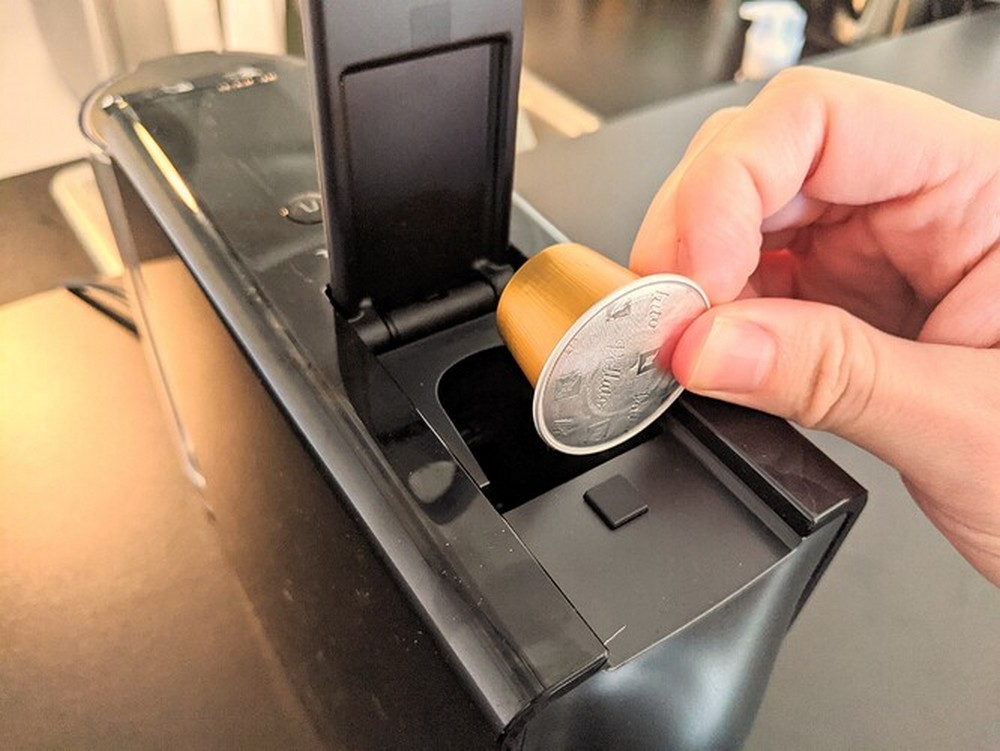
As we’ve mentioned:
The only roles you play in assisting your Nespresso to make coffee are filling the water tank, inserting the capsule, and turning on the machine.
Of course:
If there’s an issue with any of the roles you play, it will strongly affect your Nespresso’s ability to puncture capsules.
One of the most common factors that cause the puncturing problem occurs while inserting the capsules.
Here’s why:
The capsules need to be inserted in a certain way into the coffee maker. If this is not done properly, it will be difficult for your Nespresso to puncture the capsules as expected.
Also, the capsules could get stuck in the machine, which becomes a major headache.
Therefore:
The capsule must align with the compartment it is inserted into. The procedure for reinserting the capsule is carried out thus:
- Step 1: Eject the capsule in the machine by lifting the lever.
- Step 2: Empty the capsule container.
- Step 3: Lift the lever properly to reveal the capsule compartment.
- Step 4: Gently insert the capsule so that it aligns with the compartment.
Usually:
For most VertuoLine models, the capsule is inserted by placing the dome-shaped portion into the compartment.
Also:
For models that require the capsule to be inserted horizontally, the foil part of the capsule is usually placed close to the coffee outlet.
3. Closing The Lever
Here’s the thing:
Even after you’ve properly inserted the capsule, your Nespresso can still experience the puncturing problem if the lever isn’t closed properly.
You see:
As long as the lever isn’t closed completely, your Nespresso will not be able to puncture the coffee capsules inside it.
Typically:
It’s very easy to fix this issue. After inserting the capsule, gently close the lever until it clicks.
The clicking sound indicates that the lever has been closed properly, as such, your Nespresso should be able to puncture capsules once again.
However:
If the lever refuses to close, it could be because you did not properly insert the capsule.
If you reinsert the capsule and still find it hard closing the lever, it could be time to take your Nespresso to the repair shop.
4. Descaling Your Nespresso
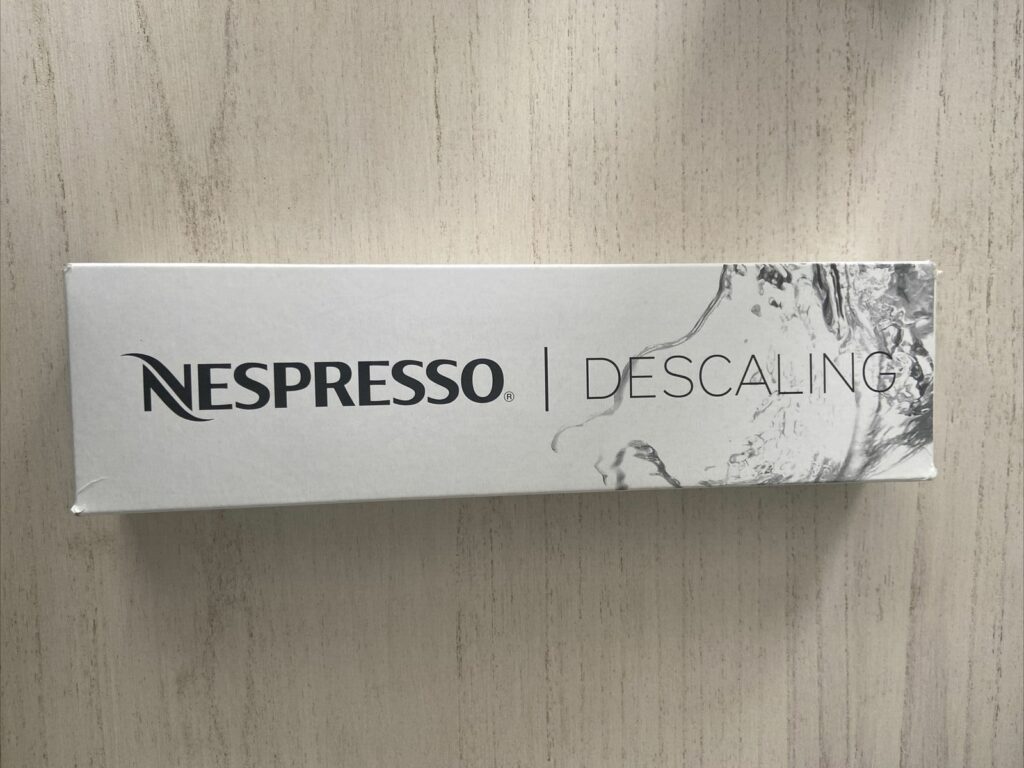
Get this:
If you’ve been using your Nespresso for a while without descaling, it’s time to get some descaling solution.
Here’s why:
Over time, limescale builds up inside your coffee maker, which hinders the flow of water and affects the water pressure.
As such, your Nespresso will experience issues like making half cups, not brewing, and the puncturing problem.
Now:
You’ll need to remove the limescale inside the machine by descaling to fix this. Nespresso recommends that you descale your coffee maker at least once in three months.
Thus:
You can descale your Nespresso by following these steps:
- Step 1: Eject used capsules in the machine using the lever.
- Step 2: Turn off your Nespresso.
- Step 3: Empty the capsule container.
- Step 4: Empty the drip tray and water tank.
- Step 5: Fill the tank with 0.5 liters of water.
- Step 6: Add one unit of Nespresso descaling solution to the water tank.
- Step 7: Reattach the water tank to the machine and place a 1-liter bowl under the coffee outlet.
- Step 8: Turn the machine and begin the descaling cycle.
After descaling, discard the descaling solution in the 1 Liter bowl and water tank.
You’ll also need to carry out a rinsing process. This is done by running clean water through the machine several times.
Models Most Affected
Here’s the thing:
Although all Nespresso models are designed to be as quick and efficient as possible, they can still develop mechanical issues that make them incapable of puncturing capsules.
However:
The following Nespresso models experience the capsule puncturing problem more frequently than others:
1. Nespresso CitiZ

All in all:
The Nespresso CitiZ is a trendy and compact model. It is light, very easy to clean, and maintain. It also heats water quickly.
However:
It cannot fill large cups and is relatively noisy. Also, its lever was designed such that it’s sometimes difficult to know if it is completely closed.
Thus, it is prone to the capsule puncturing problem.
Luckily:
You can fix this issue by closing the lever until you hear a distinct clicking sound.
2. Nespresso Essenza
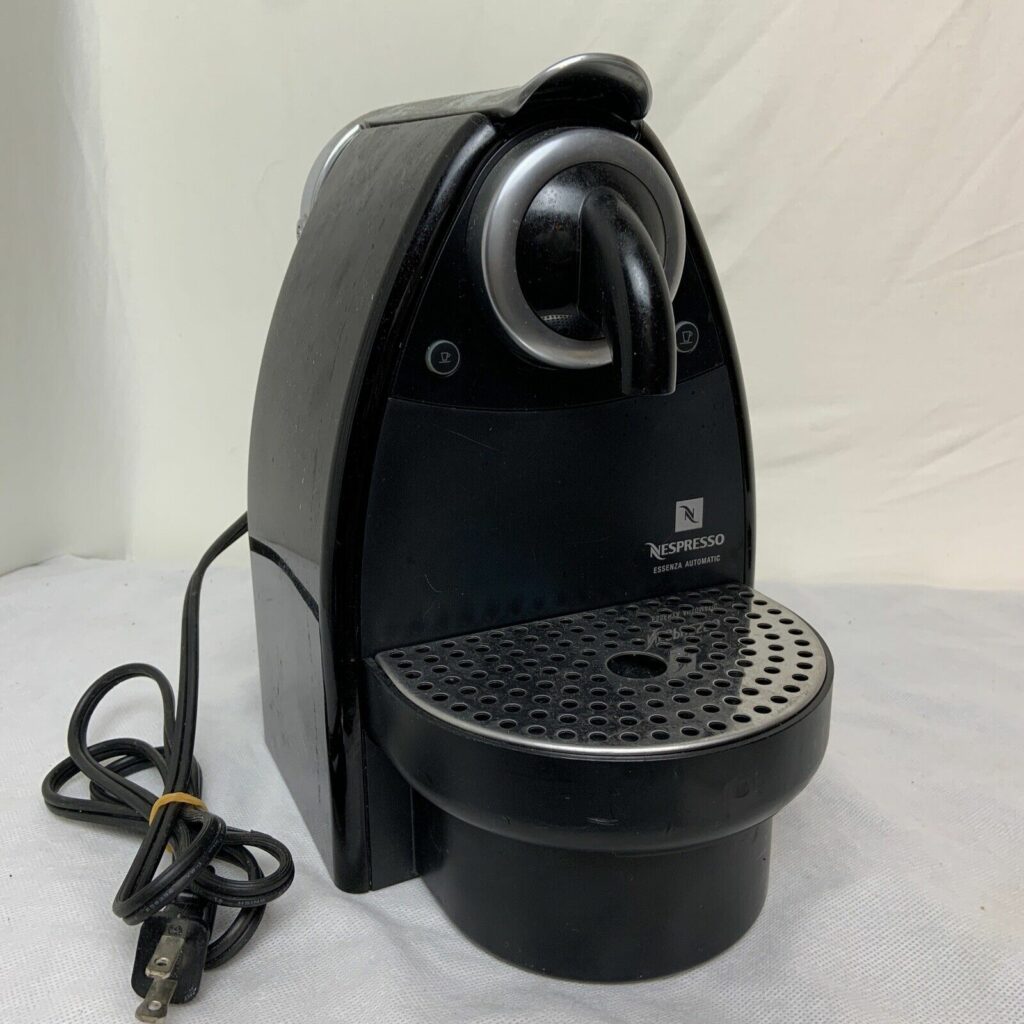
Overall:
The Nespresso Essenza is a sleek, and versatile model. It makes great coffee, heats water quickly, and is relatively inexpensive.
Although:
It does have a few flaws. It’s known for having issues with durability and has a very small capsule container.
Also:
The machine’s lever is notorious for causing capsule puncturing problems since it sometimes fails to close properly.
Nevertheless:
You can easily fix its capsule puncturing issue by trying the recommended solutions outlined in this article.
3. Nespresso Inissia

Undoubtedly:
The Nespresso Inissia is a lightweight coffee maker. It’s easy to operate, clean, descale, and it’s relatively inexpensive.
But:
It’s a bit noisy and it isn’t very durable. In addition, it isn’t equipped to make frothed milk, so you can’t make lattes with it.
Also, users report that it sometimes fails to puncture coffee capsules.
Nonetheless:
If you notice your Nespresso Inissia isn’t puncturing capsules as expected, don’t sweat it. One of our proposed remedies will surely solve your capsule puncturing problem!
4. Nespresso Lattissima
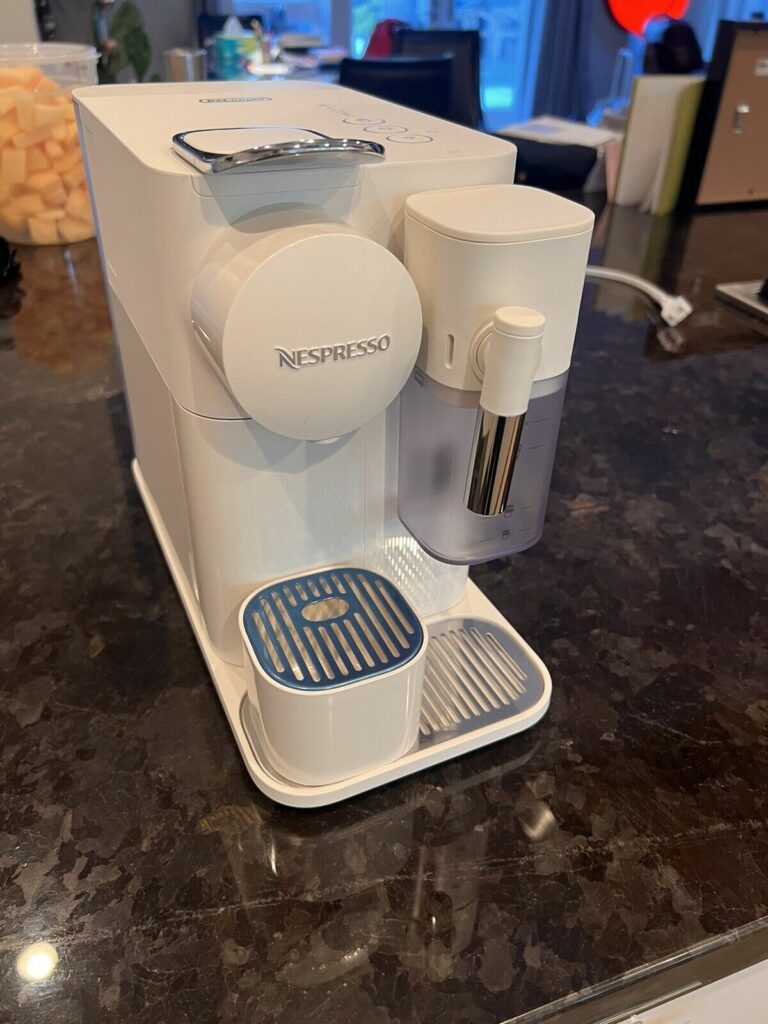
In a nutshell:
The Nespresso Lattissima is a sleek and durable model designed with high-quality materials. It is fast, efficient, and equipped with a powerful milk frother.
So:
This model can make lattes, espressos, and much more. It is also easy to use, descale, and clean.
Although:
You’ll have to pay the price for innovation and advanced technology as this model is fairly expensive. It is also a bit bulky and loud.
In addition:
Many users claim that it occasionally fails to puncture capsules as expected.
Thankfully:
With careful maintenance, cleaning, descaling, and the solutions we provided in this post, you should be able to fix it whenever it fails to puncture capsules.
5. Nespresso Pixie
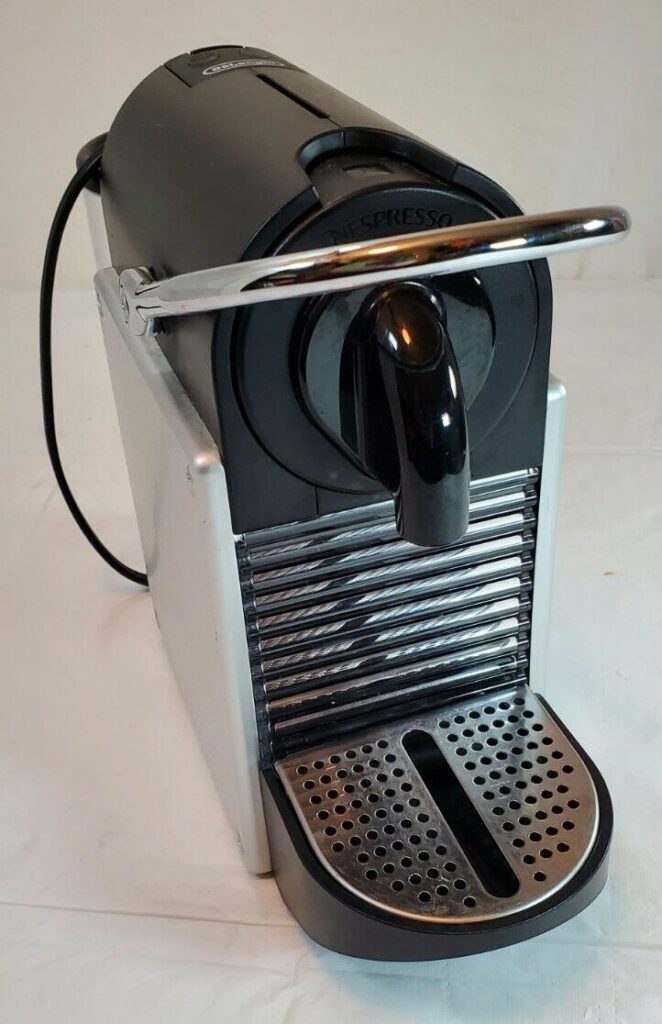
Now:
If you like small but stylish coffee makers, you’ll certainly love the Nespresso Pixie.
Like most Nespresso models, it is super fast, reliable, and incredibly efficient. It is also very durable.
Although:
Its weaknesses are almost as noticeable as its strengths. It doesn’t come with a milk frother or container, so you can’t make fancy drinks like lattes with it.
In addition:
Its water tank is relatively smaller than most other compact models. Also, it is liable to the capsule puncturing problem.
Here’s why:
Its lid might not always close fully, and its water tank dries up quickly since it’s relatively small.
As we’ve explained, these two flaws account for the reasons your Nespresso will fail to puncture capsules.
Thankfully:
You can resolve this issue by ensuring your tank is filled properly, closing the lid until it clicks, and adopting the other solutions we’ve mentioned.
Conclusion
Of course:
It’s perfectly normal for your Nespresso to develop mechanical issues from time to time.
And:
One of the major problems your Nespresso can experience is when it fails to puncture capsules.
Typically:
This problem occurs when there’s a decrease in water pressure, an improperly placed capsule, a clogged machine, or an improperly closed lever.
Fortunately:
You can fix your Nespresso’s capsule puncturing problem by:
- Adjusting the water pressure.
- Reinserting the capsule.
- Closing the lever properly.
- Descaling your Nespresso.
After trying these solutions, you should be able to get your Nespresso back in shape.
Finally:
Did we mention all the remedies for the capsule puncturing problem? Do you know some other ways to fix this issue? Let us know in the comment section below!
Frequently Asked Questions
Typically, your Nespresso will be unable to pierce pods if its lever is not closed well or if the pod isn’t inserted properly.
It will fail to pierce pods when there are trapped air bubbles in the machine, decreasing the water pressure.
The machine will also find it difficult to pierce pods if it is clogged by dirt and debris.
Routinely, you’ll need to clean your Nespresso piercing plate to ensure continued efficiency.
You’ll need soapy water, an old toothbrush, and clean water to carry out this exercise.
This cleaning process is carried out by following these simple instructions:
Step 1: Turn off your coffee maker.
Step 2: Open the machine using the lever.
Step 3: Empty the capsule container.
Step 4: Dip the toothbrush into the soapy water and insert it in the capsule compartment.
Step 5: Gently use the toothbrush to scrub the compartment for a few minutes to remove coffee grinds, dirt, and debris.
After cleaning, carry out a rinsing cycle at least two times to remove soap residues from the piercing plate.
After frequent use, limescale, dirt, and debris will build up inside your Nespresso and later obstruct the flow of water in the machine.
You can eliminate these obstructions by descaling your Nespresso using the recommended descaling solution.
Several factors can affect your Nespresso and prevent it from brewing coffee as expected.
It could be because there’s trapped air inside the machine, which is caused when you attempt to run the machine with an empty water reservoir.
This problem could also arise if your Nespresso finds it difficult to puncture capsules or the pump isn’t working.



Thanks Erica for the lifesaving advice (not mine, the machine’s). I was just about to throw my lattissima out because I got so annoyed but following your advice it is now safe and working well. Also learnt a bit about how it works and won’t be so phased when the next problem comes up! 🙏
I’m glad I could help. Thank you very much for the feedback, Phil!
Is it possible for the puncture plate to become blunt? And if so, is that part replaceable? (Essenza Nespresso machine).
It is possible for the puncture plate to become blunt overtime, which requires servicing. In case of that happening, do not hesitate to contact Nespresso support on 800 26 33 33 or via Nespresso Livechat.
Coffee machine not perforating properly can be also caused by other things such as the plate being dirty (it is possible to clean it with cotton stick) or the machine requires descaling.